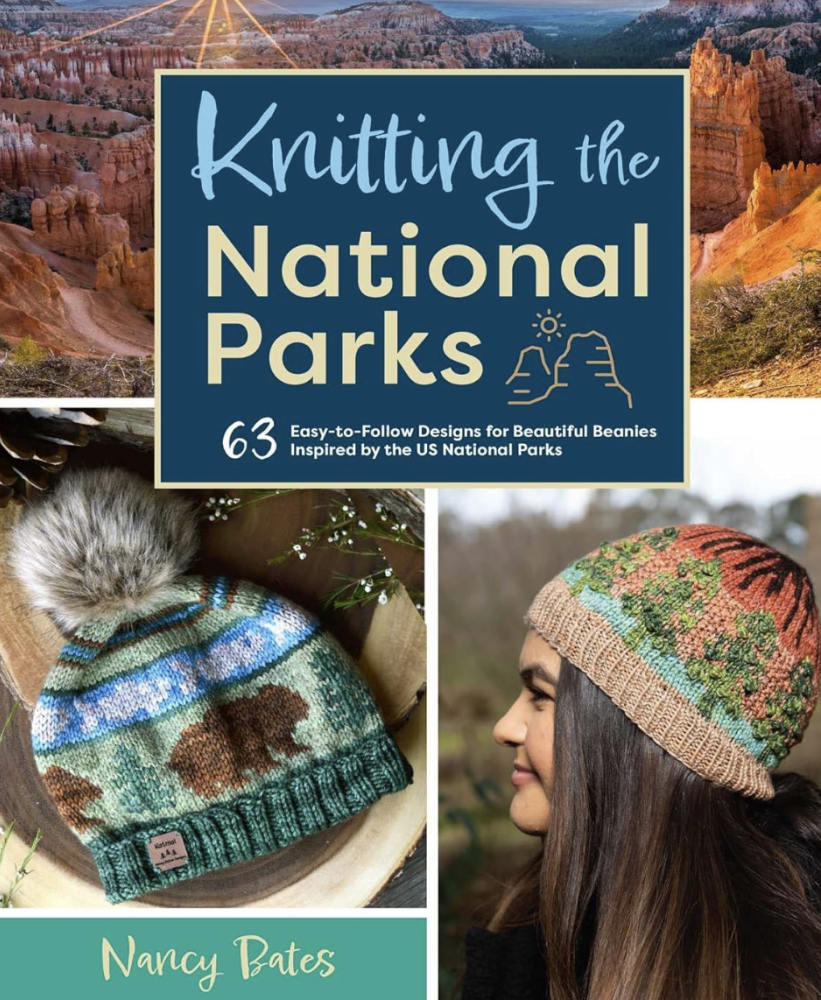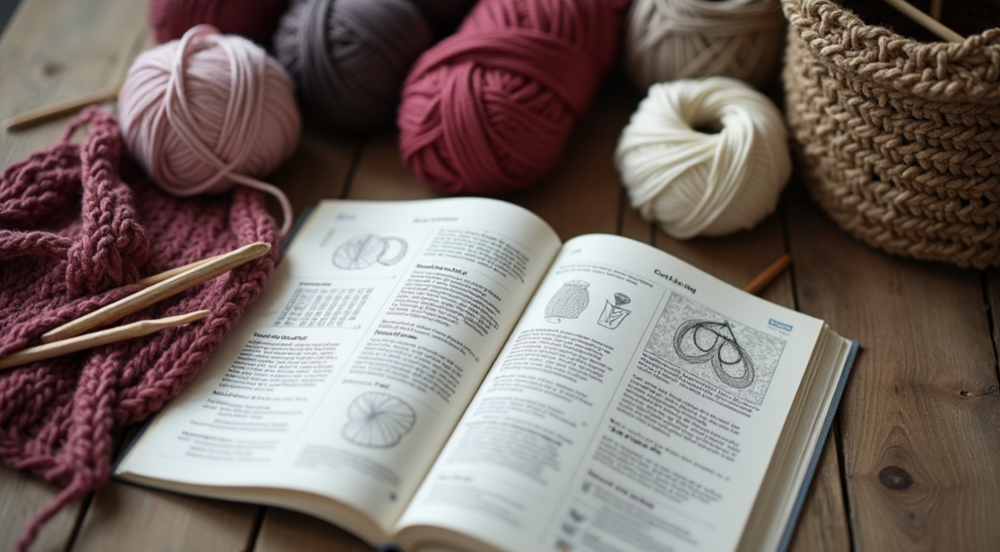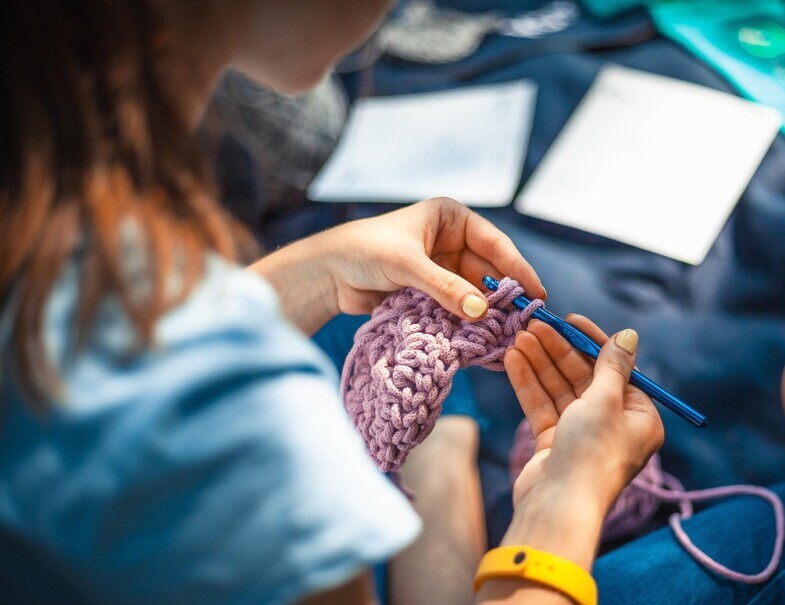There are so many wonderful knitting pattern books available online, so I am going to be looking at some of them and also telling you what I look for in a knitting pattern book before I buy it.
Knitting is more than just a hobby. It’s a creative pursuit that brings comfort, satisfaction, and a sense of connection to a long tradition of craft. For many, the adventure begins with one of the many available knitting pattern books. What makes these books popular is how they assist in skill development and why they continue to be a source of inspiration for knitters around the world. From detailed step-by-step instructions to beautifully illustrated charts, these books serve as guides that transform raw resources into artful creations.
Every page of these books is a doorway into historical techniques, modern trends, and a blend of both that is sure to spark creativity. I’ve taken an all-in-one approach to covering everything from book quality and instructional clarity to the additional features that make each title unique.
This article may contain affiliate links, which means that the owner of this website will get a commission on qualifying purchases at no extra cost to the buyer.

Knitting pattern books are more than just manuals; they are a reservoir of collective wisdom and artistic insight. Many books offer detailed diagrams, traditional patterns, experimental designs, and even digital components that work on multiple levels. Whether you’re looking to create a cozy hat, a textured scarf, a pair of gloves, or a complex sweater, there’s a pattern book that meets your needs.
There is a longstanding tradition in knitting literature. Many of these books originated decades ago, documenting patterns that have been passed down through generations. As technology evolves, so too do these pattern books. Modern editions often combine high-quality photography, vibrant color illustrations, and smart layout designs that make the learning process simpler and more enjoyable.
My Favorite Knitting Pattern Books
One standout title, “The Knitter’s Bible,” has been celebrated for its encyclopedic approach, offering over 200 patterns that span from simple scarves to intricate sweaters. Another highly regarded book, “A Knitter’s Year,” will see you through four seasons of clothes to make for your whole family, thanks to expert knitter and internet darling Ida Wirak Trettevik. Then there is “Easy Lace Knits,” which is a book that offers 20 beautiful lace patterns for the more advanced knitter.
Ratings for these books vary, but they all share common attributes. They feature well-organized content, high-quality visuals, and the ability to spark creativity. In a manner reminiscent of all-in-one online platforms, I assigned scores based on several criteria: instructional clarity, visual quality, pattern variety, and overall design.
About the Knitting Pattern Book Creators and Curators
Behind every well-crafted knitting pattern book is a community of creators, designers, and enthusiasts who are deeply passionate about the craft. Many of these books come from authors who have been knitting for decades, thoroughly honing their skills and updating traditional patterns with fresh insights. They understand the challenges of both learning the basics and mastering advanced techniques, and they have dedicated themselves to sharing their accumulated wisdom.
Several authors have fascinating backgrounds: some began with handcrafted projects passed down from family members, while others started in a professional capacity, working at knitting cooperatives and artisan workshops. Their individual adventures contribute to the rich tapestry of knitting literature. By infusing detailed anecdotes and historical context into the lessons, they provide not only a manual for crafting items but also a window into the history and glow-up of knitting.
These curators of the craft also often collaborate with modern designers to perfect diagram layouts, introduce current trends, and incorporate the latest innovations in yarn technology. The shared goal is to make knitting accessible and enjoyable, regardless of where you are on your skill adventure. Their commitment to continuous improvement mirrors the spirit of the crafting community; feedback from users is often taken very seriously and leads to periodic revisions of subsequent editions. This collaborative, almost conversational relationship with their audience is what sets these books apart from many other types of instructional manuals.
Best Knitting Pattern Books for Beginners
For those just starting out, choosing the right knitting pattern book can feel overwhelming. There is a wealth of information available, but not all of it is beginner-friendly.
A book designed specifically for beginners usually starts with basic stitches such as knit, purl, and slip stitch. It also explains terms and includes a glossary of common knitting terminology.
Many books include small projects like simple scarves, dishcloths, or even playful beanies that allow new knitters to see quick results. This immediate success builds confidence and encourages ongoing exploration of more complex patterns.
As an example, one of the best-selling beginner books, “A little course in knitting,” lays out every step in simple language. It avoids overwhelming jargon and instead uses plain descriptions accompanied by detailed photographs. These visual aids are particularly helpful because they offer a complete guide on how to start a project, troubleshoot common issues, and perfect each stitch type.
Another essential aspect is the layout of the book. A good beginner’s guide should be organized in a way that feels friendly and non-intimidating. The structure might introduce one technique at a time, followed by practice projects that challenge the learner just enough to progress without frustration. Many of these books also include tips on choosing the right yarn and needles, which are crucial decisions that affect the overall experience and outcome of any project.
The readability of these books is paramount. Large, clear fonts, step-by-step numbered instructions, and plenty of white space ensure that the reader does not feel rushed or overwhelmed. Additionally, bonus sections often provide insights on how to fix common mistakes, which is a lifesaver for beginners. The supportive tone of these authors gives a sense of partnership, making the learning adventure feel like a shared experience.
If you are at the start of your knitting adventure, a book that covers all these bases is an excellent tool to have by your side, helping you transform yarn and needles into something truly delightful.
Knitting Pattern Books for the Experienced Knitter
Once you are comfortable with the basics of knitting, the next challenge is to expand your skills and experiment with more complex designs.
Advanced knitting pattern books are designed to push your abilities further. These books often include intricate stitch patterns, sophisticated charts, and advanced techniques that require a nuanced understanding of both theory and practice.
One example is the book “Aran Knitting,” which is known for its creative combinations of textures and colors in Celtic design. It introduces advanced techniques such as lacework, cable knitting, and colorwork.
Advanced books are not only about sophistication but also about inspiration. They often feature projects that are as much about design as they are about functionality. For seasoned knitters looking to create heirloom pieces, these books offer ideas that infuse both artistic expression and technical skill. The charts in these books are often detailed and require meticulous attention, making them a rewarding challenge for those who have mastered the basics.

I simply love “Knitting the National Parks,” which is a selection of 63 beautiful beanies to represent all the national parks in the United States.
Innovation in pattern books goes hand in hand with technological advancements. Modern editions often include QR codes linking to video tutorials, downloadable charts, and interactive communities where knitters can discuss their work and share customizations.
All these resources bolster a sense of connectivity and continuous learning that enriches the knitting experience. Creative exploration is not confined to the pages of the book but extends into a broader digital and community space, ensuring that ideas are shared and built upon from one generation to the next.
One of the core strengths of effective knitting pattern books is their ability to break down complex projects into simple, digestible steps. Detailed instructions ensure that you can follow along at your own pace without feeling overwhelmed. Many books dedicate entire chapters to step-by-step guides that not only cover the technical aspects but also provide visual cues, troubleshooting tips, and advice on overcoming common obstacles.
Additionally, these guides emphasize the importance of proper needle and yarn selection. By explaining the impact of different materials on the outcome, the books empower knitters to make informed decisions and adapt patterns to suit their individual needs. Clear diagrams, accompanied by high-quality printed visuals, help break down each stage of the process. Often, step-by-step sections are punctuated by quick reference summaries, which serve as handy guides while you work on your project.
This structured approach caters to a wide range of knitters, from those who are completely new to the craft to those who simply need a refresher on older techniques. The attention to detail in these guides is not only practical but also inspires confidence, making the process of learning and perfecting techniques both enjoyable and fulfilling.
Another key aspect that distinguishes high-quality knitting pattern books is the design and layout of the content. How information is presented can significantly affect your ability to understand and follow a pattern. The effective use of illustrations, charts, and diagrams is crucial, especially when tackling intricate designs.
Most pattern books dedicate ample space to detailed charts that show every stitch in a project. Some feature full-page layouts with color-coded symbols that represent various elements of the pattern. These visual elements allow knitters to grasp the flow of a design. For many, a clear chart can be the difference between a successful project and one fraught with confusion. Moreover, illustrations often include side-by-side comparisons of what is intended versus common mistakes. This further aids in the learning process.
Future Trends in Knitting Pattern Books

The knitting community is constantly evolving, and so too is the field of knitting pattern books. With the integration of digital technologies, the future of these books looks both exciting and promising. Many publishers are now exploring innovative formats that combine traditional text with interactive elements.
For example, augmented reality (AR) is beginning to make its way into the crafting world. Imagine pointing your phone at a printed page and seeing a digital overlay that demonstrates a complex stitch or a moving diagram that shows how a pattern progresses with each row. These features could revolutionize how knitters interact with printed material, merging the tactile charm of a book with the dynamic capabilities of digital media.
In addition to AR, many pattern books are incorporating QR codes that link to online video tutorials, additional charts, and live community forums. This hybrid approach ensures that you have access to up-to-date information and expert insights even after you’ve finished reading the printed book. The future may also see more collaborative projects where knitters contribute their modifications and share them in real time, creating ever-evolving pattern databases that respond directly to user feedback.
Moreover, sustainability is becoming a key trend in publishing. With increasing awareness about the environmental impact of manufacturing, many publishers are turning to recycled materials, eco-friendly inks and even offering digital-only versions to reduce paper waste. These initiatives not only reflect a commitment to the environment but also resonate with the values of many modern knitters who are consciously choosing sustainable practices in all aspects of their crafting.
The convergence of traditional craftsmanship with modern technology, sustainability, and community-driven innovation charts a bright future for knitting pattern books. As the landscape of knitting continues to evolve, these books will remain at the heart of the craft, continuously inspiring new generations of knitters.
A good pattern book is more than just a set of instructions. It is an invitation to experiment, create, and share a part of your artistry with others. The best pattern books offer guidance, confidence, and a deep connection to the history, innovation, and ongoing glow-up of the knitting craft.
There is no one-size-fits-all answer when it comes to choosing the right knitting pattern book. Instead, it is a personal adventure in which you weigh your current skills against your creative aspirations. I hope that this review helps you find a book that not only teaches you new techniques but also sparks your own creative expression.
If you’re ever in doubt about which title to choose, consider starting with a book that offers a range of beginner projects. As your skills develop, you can gradually explore more complex patterns and check out books designed for advanced knitters. In the end, each project offers a chance to grow, learn, and add a unique piece to your collection of creations.
Remember, whether you choose a treasured classic or a modern innovation, each book serves as a reminder of the joy found in every stitch and the endless possibilities that come with every new project.
If you have any questions or want to share your experiences with knitting pattern books, feel free to leave a comment below. Your feedback helps build a stronger, more connected community for knitters everywhere. Enjoy your knitting adventures, and happy crafting!
